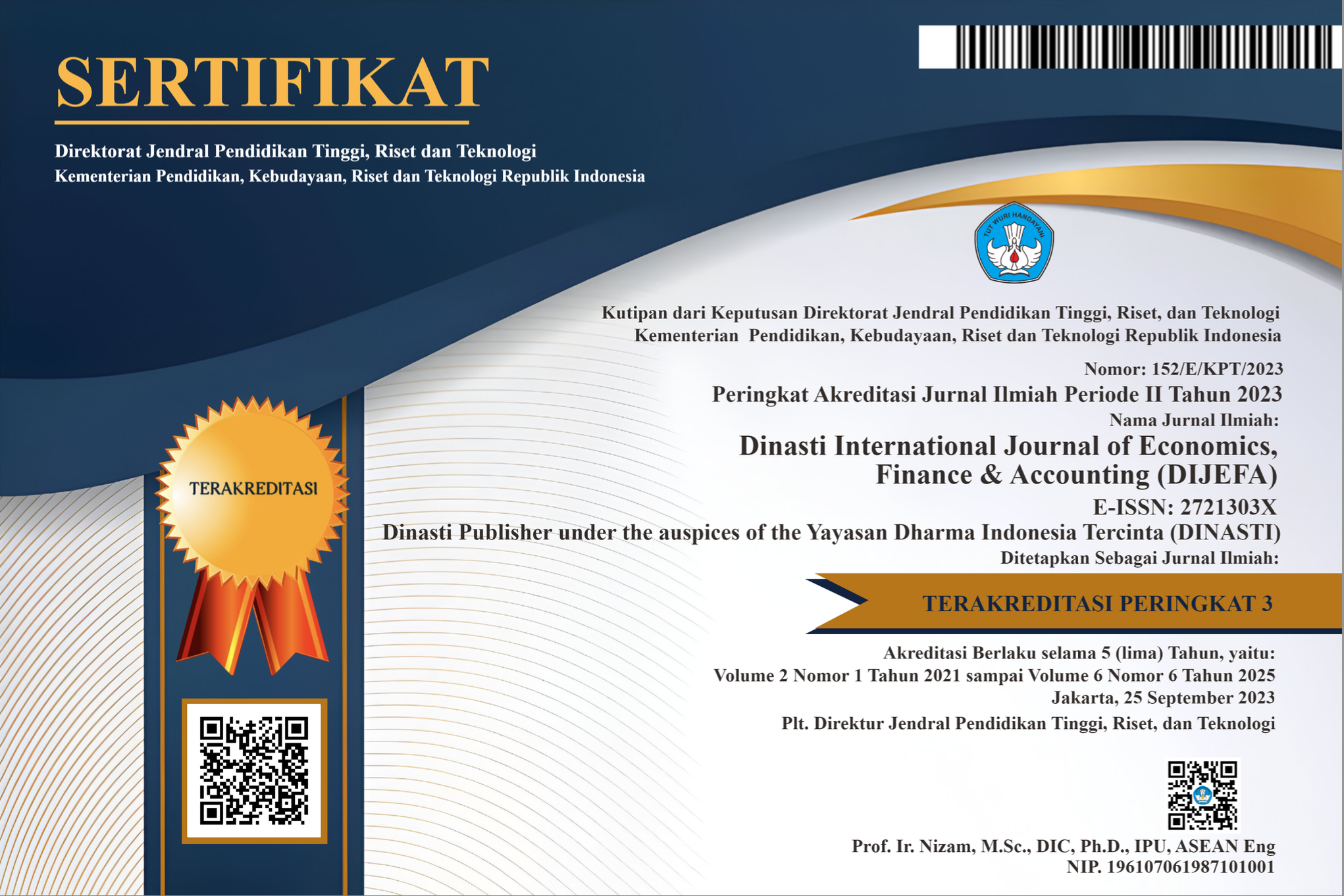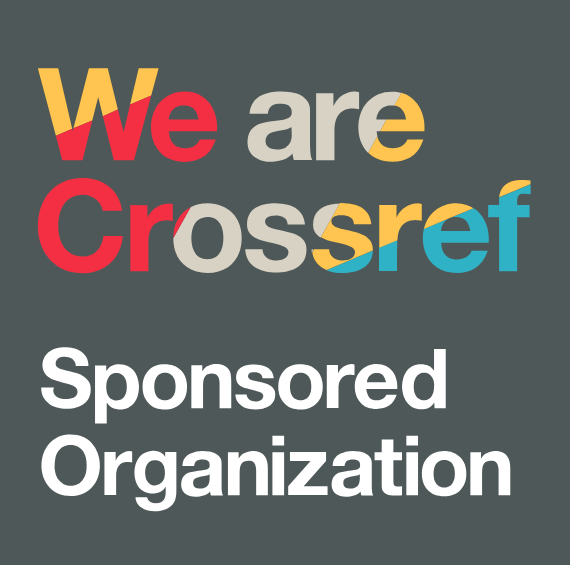Model of Improving Employee Performance through Organizational Commitment to Pulp Industry in Sumatera
DOI:
https://doi.org/10.38035/dijefa.v3i4.1448Keywords:
Competency, Career Development, Employee Performance, Extrinsic Motivation, Organizational CommitmentAbstract
This study aims to describe and analyze Model of improving employee through organizational commitment to Pulp Industry in Sumatera. The research method used descriptive quantitative. The sample of this study used probability sampling technique. The sample selection criteria was employees of the pulp industry in Jambi, Pekanbaru and Palembang. Beverage Development with a total of 240 samples obtained from Sumatera (Jambi, Pekanbaru and Palembang). Data analysis was performed by using descriptive statistical analysis and inferential statistical analysis. The data obtained was processed using a component-based or variance-based Structural Equation Modeling (SEM) analysis which is known as Partial Least Square (PLS). It was found that the direct influence of competence, career development and extrinsic motivation and organizational commitment had a positive and significant effect on employee performance in pulp industry, then the indirect effect of competence, career development and extrinsic motivation had a positive and significant effect on employee performance mediated by organizational commitment.
References
Allen, N.J., & Meyer, J. . (1990). The Measurement and Antecedents of Affective, Continuance and Normative Commitment to the Organization. Journal of Occupational Psychology, 63 (1), 1-18.
Armstrong, M. (2012). Armstrong’s Handbook of Human Resource Management Practice. United Kingdom: Ashford Colour Press.
Anesukanjanakul, J., Banpot, K., Jermsittiparsert, K. (2019). Factors that influence job performance of agricultural workers. Int. J. Innov. Creat. Change 7 (2), 71–86.
Bartlett, K. R. (2001), ‘The relationship between training and organizational commitment: a study in the health care field’, Human Resource Development Quarterly, 12, 4, 335–61
Bartram, D., Robertson, I. T., & Callinan, M. (2002). Introduction: A framework for examining organizational effectiveness. In I. T. Robert-son, M. Callinan, & D. Bartram (Eds.), Organizational effectiveness:The role of psychology (pp. 1–10). Chichester, UK: Wiley.
Bayram, C. (2008). Kariyer planlama ve yönetimi [Career planning and its management] (1. Baskı) İstanbul: Kumsaati Yayın Dağıtım Ltd.Şti.
Boxall, P. and Purcell, J. (2011).Strategy and Human Resource Management. 3rd ed. New York: Palgrave Macmillan
Boxall, P. and Purcell, J. (2011).Strategy and Human Resource Management. 3rd ed. New York: Palgrave Macmillan.
Cameron, K.S., & Quinn, R.E. (2006). Diagnosing and changing organizational culture : Based on competing values framework. San Fransisco: Addison-Wesley.
Colquitt Jason A., Jeffery A. Lepine, dan Michael J. Wesson.(2009). Organizational Behaviour. Improving Perfomance and Commitment in the Workplace , New York: McGraw-Hill
Crant, J. M. (2000). Proactive behaviour in organizations,Journal of Management, Vol. 26 No. 3,pp. 435-462.
Dermol, V., & Čater, T. (2013). The influence of training and training transfer factors on organisational learning and performance. Personnel Review. https://doi.org/10.1108/00483481311320435
Donna Rodriguez, et al. (2002). Developing Competency Models to Promote Integrate Human Resource Practices. Human Resource Management,Vol. 41, No. 3. hh. 309–324
Gagne, M., Deci, E. L. (2005).“Self Determination Theory and Work Motivation”.Journal of Organizational Behavior. Vol. 26, p. 331-362.
Gaspar Robert (2012). A Study on the Perception of Human Resource Executives On Competency Mapping for the Superior Results. International Journal of Social Science Tomorrow, 1(8)
Girdwichai, L., & Sriviboon, C. (2020). JOURNAL OF SECURITY AND SUSTAINABILITY ISSUES ISSN 2029-7017 / ISSN 2029-7025 ( online ) 2020 Volume 9 January JOURNAL OF SECURITY AND SUSTAINABILITY ISSUES ISSN 2029-7017 / ISSN 2029-7025 ( online ) 2020 Volume 9 January. 9(4), 42–54.
Gridwichai, Piched., Anuchit Kulwanich., Bunjob Piromkam., and P. K. (2020). Role of Personality Traits on Employees Job Performance in Pharmaceutical Industry in Thailand. A multifaceted review journal in the field of pharmacy. 11(3): 185-194.
Hair, Joseph F., Black, William C., Babin, Barri J., & Anderson, R. (2010). Multivariate Data Analysis. New Jersey: Pearson.
Ivancevich, Konopaske and Matteson, Organizational Bahavior and Management, 8 th Edition, McGraw Hill, 2008.
Luthans, Fred. 2002. Organizational Behavior: 7 th Edition. New York: McGrawHill Inc
Mathis, Robert, L. & J. H., & Jackson. (2002). Manajemen Sumber Daya Manusia Buku 1. (Jimmy Sade ll & Bayu Prawira Hie. Penerjemah) Jakarta: Salemba Empat.
Mosadeghrad, A. M. (2003). Principles of health care administration. Dibagran Tehran, Tehran.
Nguyen, P.D., Dang, C.X. and Nguyen, L.D. (2015), “Would better earning, work environment, and promotion opportunities increase employee performance? An investigation in state and other sectors in Vietnam”, Public Organization Review, Vol. 15, pp. 565-579.
Noe, R.A., Hollenbeck, J.R., Gerhart, B. and Wright, P. (2006), Human Resource Management: Gaining a Competitive Advantage, McGraw-Hill Companies, New York, NY.
Panayotopoulou, L., Bourantas, D. and Papalexandris, N. (2003). Strategic human resource management and its effects on firm performance: an implementation of the competing values framework,International Journal of Human Resource Management, Vol. 14 No. 4, pp. 680-699.
Parker, S. K., Johnson, A., & Collins, C. G. (2006a).Enhancing proactive patient care: An intervention study. Paper presented at the Academy of Management Conference, Atlanta, USA
Pulakos, E.D. (2004), Performance Management: A Roadmap for Developing, Implementing and Evaluating Performance Management Systems, SHRM Foundation, Alexandria, VA.
Robbins, S. P. dan T. A. J. (2008). Perilaku Organisasi, Edisi 12, Buku 1, Salemba Empat. Jakarta.
Ryan, R. M., & Deci, E. L. (2020). Intrinsic and extrinsic motivation from a self-determination theory perspective : Definitions , theory , practices , and future directions. April. https://doi.org/10.1016/j.cedpsych.2020.101860
Song, J.H., Martens, J., McCharen, B. and Ausburn, L. (2011), “Multi-structural relationships among organizational culture, job autonomy, and CTE teacher turnover intention”, Career and Technical Education Research, Vol. 36, pp. 3-26.
Spector, P.E. (1982). Behavior in organizations as a function of employee’s locus of control. Psychological Bulletin, 91(3), 482–497
Spencer, L. & Spencer, S. (1993). Competence at Work : Models for Superior Performance. New York: John Wiley & Sons, Inc.
Thompson, J.A. (2005), “Proactive personality and job performance: a social capital perspective”, Journal of Applied Psychology, Vol. 90 No. 5, pp. 1011-1017.
Downloads
Published
How to Cite
Issue
Section
License
Authors who publish their manuscripts in this journal agree to the following conditions:
- The copyright on each article belongs to the author(s).
- The author acknowledges that the Dinasti International Journal of Economics, Finance & Accounting (DIJEFA) has the right to be the first to publish with a Creative Commons Attribution 4.0 International license (Attribution 4.0 International (CC BY 4.0).
- Authors can submit articles separately, arrange for the non-exclusive distribution of manuscripts that have been published in this journal into other versions (e.g., sent to the author's institutional repository, publication into books, etc.), by acknowledging that the manuscript has been published for the first time in the Dinasti International Journal of Economics, Finance & Accounting (DIJEFA).


























































